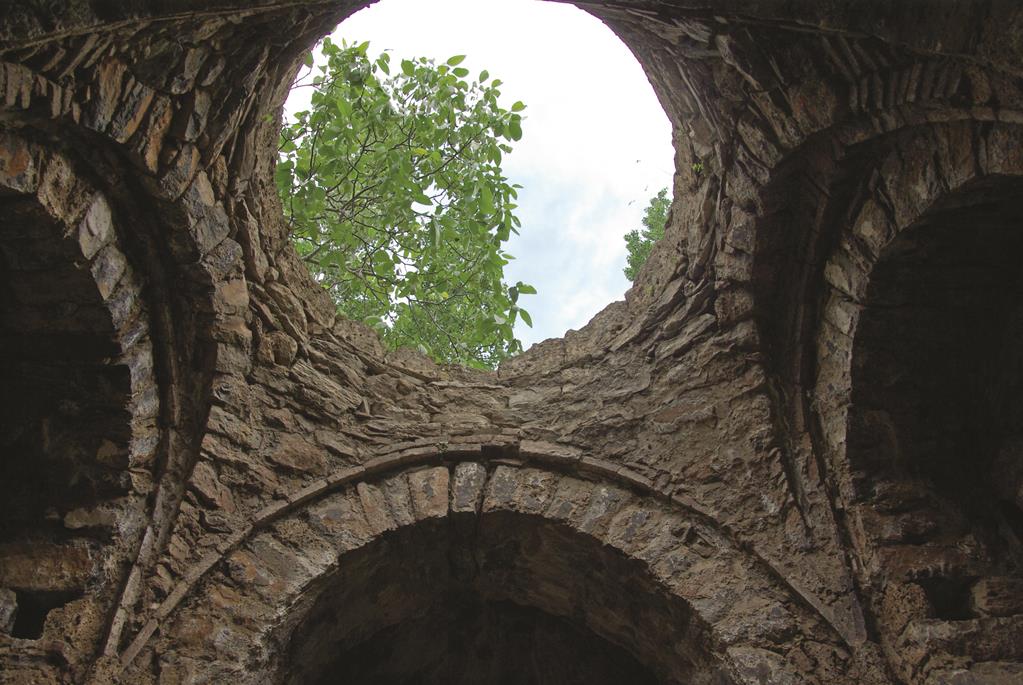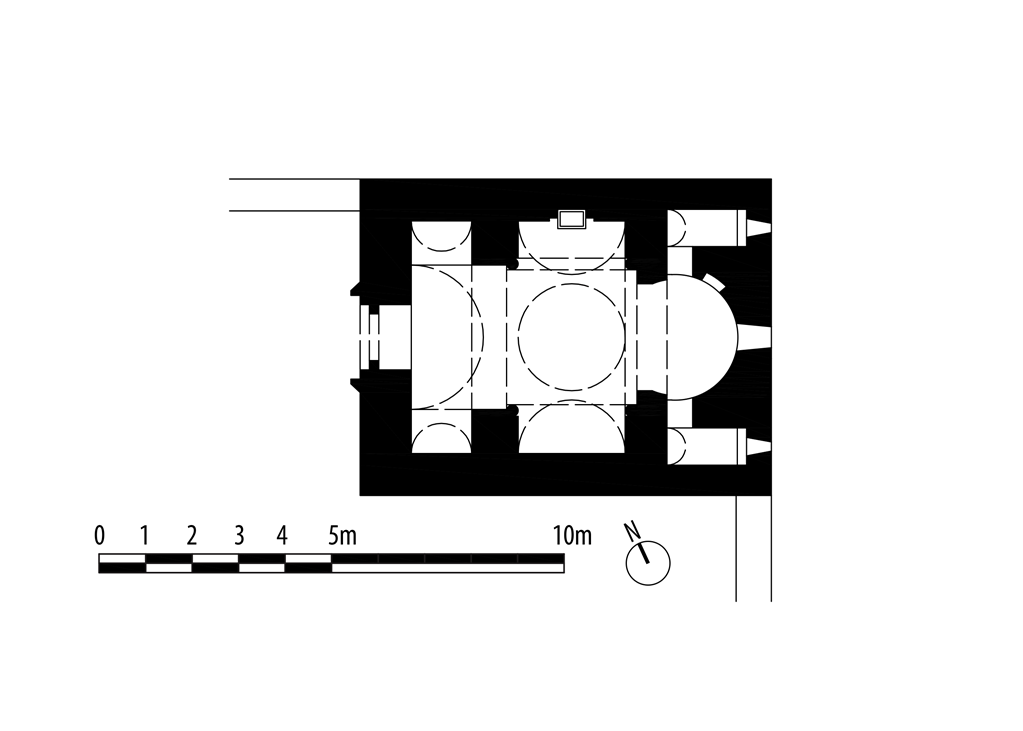The Holy Mother of God monastery of Hzar is located southeast of new Khizan [Hizan, Karasu], at 38° 06’ N and 42° 29’ E, on the north slope of Mount Hzar [Haster Dağ] upstream from the mouth of the Sbarguerd [***] Valley, in the valley of Guetsan [Kesan], which runs into the eastern branch of the Tigris further to the south. For this reason it has often been called Guetsan monastery (Guetsana Vank‘ ); it is also known by the name of the village of Sori or Sôri [Süreh], located nearby: Sori monastery or Soro Vank‘.
The architectural details argue in favor of the monastery having been founded at the beginning of the 11th century; tradition, on the other hand, dates it back to Saint Thaddeus, placing it in the vicinity of a spring the Apostle is supposed to have caused to gush forth. The monastery is attested in texts dated from 1436 to 1474, then from 1574 to 1679, under the name of the Mother of God, Saint George and the Holy Savior. It was an active scriptorium, but declined with the demise of the Khizan school in the last quarter of the 17th century. In the 19th century, the monastery was targeted by looters. Sacked during the 1895 massacres, it could not be restored before 1915.

Coupole, 2011 (Coll. privée)
The Holy Mother of God monastery of Hzar includes:

Plan (Thierry, 1989, p.386)
• The church of the Mother of God, built on a cross-in-square plan and measuring 8.8 × 6.7 m with a dome and octagonal drum, dihedral pillars garnished with small columns, a horseshoe apse communicating with two side chambers, and with niches lining the two sides of the west arm;
• A courtyard wall, the northeast corner of which is occupied by the church and against which the monastery buildings were built;
• A fountain that captures the spring mentioned by the tradition.
The proximity of the village meant that Sori’s church of Saint Christopher (Sourp K‘risdap‘or) was regarded as part of this monastic complex; this is a church with twin naves, measuring 9.1 × 12.8 m, open to the south, and dating from the 10th-11th centuries.
Confiscated after the Great War, the Hzar monastery was left empty. In 1974, the church of the Mother of God was still standing, but there was a gaping hole in the dome, while the covering stones of the drum and all the roof slabs had been removed; the southeast corner was broken as well. The fountain remained, but only traces of the courtyard wall and the other buildings were left. In Sori itself, the church of Saint Christopher could still be seen. Since then, the church has lost its drum. Numerous stones have been removed or have fallen from the façade. The jams, lintel and archivolt of the main door have disappeared, and the section of the façade above the door has completely fallen away. Inside the church, the northeast engaged pier is dangerously eroded and no longer supports the arches. An isolated vault, which can still be seen standing not far from the church, may have belonged to an annex or even to the fountain, unless it is the remains of a tower. The church of Saint Christopher in Sori has been destroyed.
Oskian, 1940-1947, III [1947], 878-880. Thierry, 1989, 384-387.